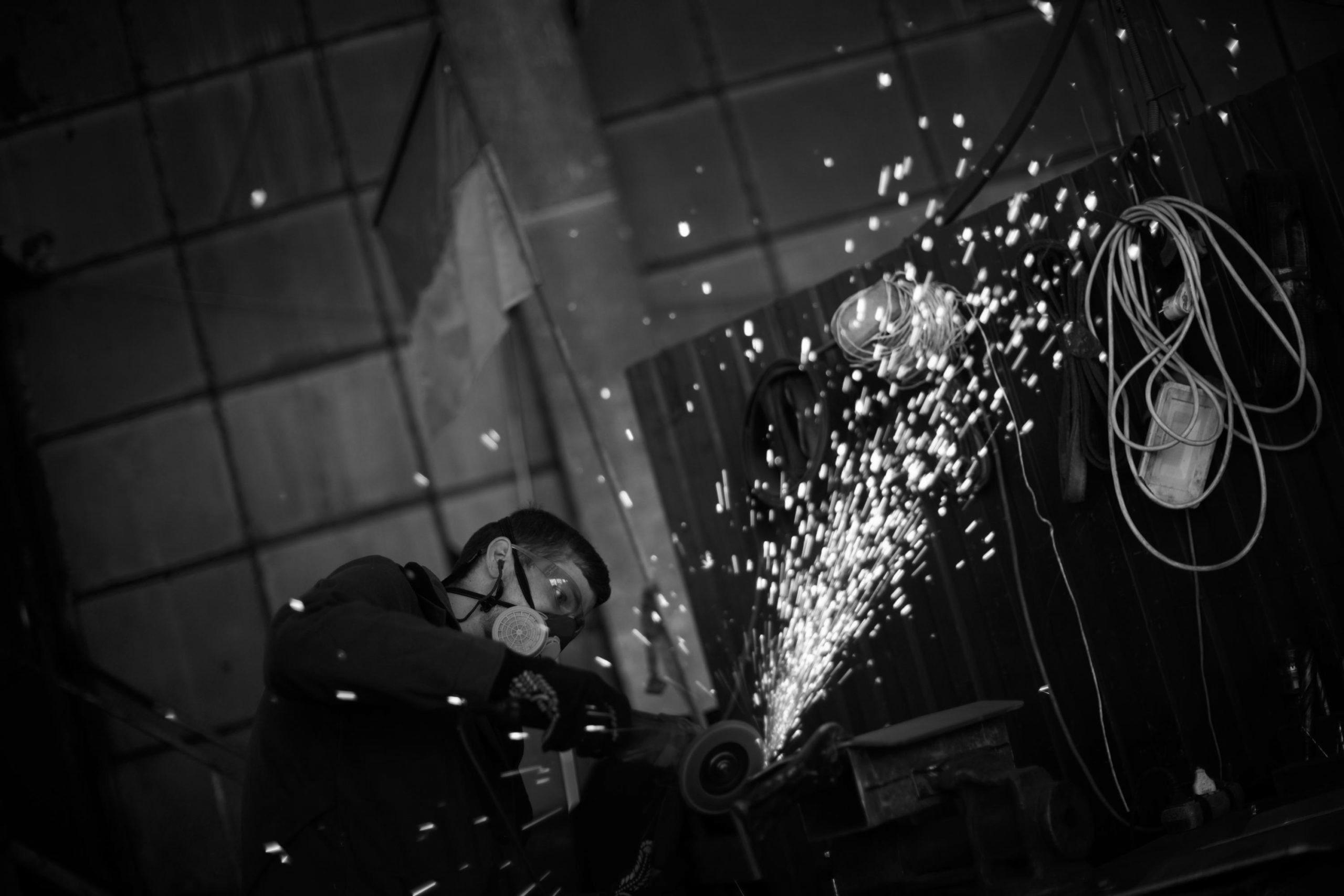Protect the body: Ukraine volunteers craft armor, camouflage
Warning: Undefined variable $post_id in /home/webpages/lima-city/booktips/wordpress_de-2022-03-17-33f52d/wp-content/themes/fast-press/single.php on line 26

2022-05-09 09:16:18
#Shield #body #Ukraine #volunteers #craft #armor #camouflage
ZAPORIZHZHIA, Ukraine (AP) — Sparks fly as a round saw slices into steel, while welders close by work feverishly to the sound of blaring heavy metal. Upstairs, stitching machines clatter as ladies mark patterns on fabric being formed into bulletproof vests.
An outdated industrial advanced in the southeastern Ukrainian riverside city of Zaporizhzhia has turn out to be a hive of exercise for volunteers producing every part from physique armor and anti-tank obstacles to camouflage nets, transportable heating stoves and rifle slings for Ukrainian troopers preventing Russia’s invasion. One part focuses on automobiles, armor-plating some, changing others into ambulances. Another organizes meals and medical deliveries.
With the front line about 50 kilometers (30 miles) from town, some sections of the operation, such because the stitching of bulletproof vests, are working around the clock in shifts to meet demand. Crowdfunding has introduced in enough money to purchase steel from Sweden, Finland and Belgium, which is lighter than local steel, organizers say, an important quality for body armor.
The operation is the brainchild of local superstar Vasyl Busharov and his buddy Hennadii Vovchenko, who ran a furniture-making business. They named it Palianytsia, a kind of Ukrainian bread whose identify many Ukrainians say can't be pronounced properly by Russians.
The operation relies totally on volunteers, who now number more than 400 and come from all walks of life, from tailors to craftsmen to lawyers. Other than these involved in production, there are also drivers delivering humanitarian help and medical gear bought by means of donated funds.
“I really feel I'm wanted right here,” said dressmaker Olena Grekova, 52, taking a short break from marking material for vests.
When Russia invaded on Feb. 24, she was in Thailand looking for inspiration for her spring assortment. Initially, she stated, she wondered whether it was an indication from God that she shouldn’t return. Her husband and two grownup sons urged her to not.
“But I made a decision that I had to return,” she stated.
She had identified Busharov for years. Arriving house on March 3, she gathered her gear the next day and by March 5 was at Palianytsia. She’s been working there every day since, bar one, typically even at night time.
Shifting from designing backless ballgowns to creating purposeful bulletproof vests was “a new expertise for me,” Grekova said. But she sought feedback from soldiers for her designs, which have armor plates added. Now she helps to produce a number of versions, together with a prototype summer vest.
In another part of the commercial complex, 55-year-old Ihor Prytula was busy making a new camouflage internet, winding items of dyed fabric by a string frame. A furniture-maker by trade, he joined Palianytsia initially of the battle. He had some military experience, he mentioned, so it was straightforward to get feedback from troopers on what they wanted.
“We converse the identical language,” he said.
For Prytula, the struggle is private. His 27-year-old son was killed in late March as he helped evacuate folks from the northern town of Chernihiv.
“The warfare and demise, it’s unhealthy, belief me, I know this,” he mentioned. “It’s unhealthy, it’s tears, it’s sorrow.”
The decision for volunteers went out as quickly because the struggle began. Busharov introduced his challenge on Facebook on Feb. 25. The subsequent day, 50 folks turned up. “Subsequent day 150 individuals, next day 300 individuals. ... And all together, we attempt (to) protect our city.”
They started out making Molovov cocktails in case Russian soldiers superior on Zaporizhzhia. In 10 days, they produced 14,000, he stated. Then they turned to producing anti-tank obstacles known as hedgehogs — three giant metal beams soldered collectively at angles — used as a part of the town’s defenses. Quickly, Busharov and Vovchenko said, they discovered another pressing need: there weren’t enough bulletproof vests for Ukraine’s troopers.
However studying how to make one thing so specialized wasn’t straightforward.
“I wasn’t really connected with the army at all,” stated Vovchenko. “It took two days and three sleepless nights to know what needs to be achieved.”
The group went by way of varied forms of steel, making plates and testing them to verify bullet penetration. Some didn’t supply enough protection, others have been too heavy to be useful. Then they had a breakthrough.
“It turns out that steel used for automobile suspension has very good properties for bullet penetration,” Vovchenko stated, standing in front of 4 cabinets of check plates with varying degrees of bullet damage. The one fabricated from automotive suspension metal confirmed dozens of bullet marks but none that penetrated.
The vests and the whole lot else made at Palianytsia are supplied free to soldiers who request them, as long as they can show they're within the military. Each plate is numbered and every vest has a label noting it isn't for sale.
So far, Palianytsia has produced 1,800 bulletproof vests in two months, Busharov mentioned, including there was a ready record of round 2,000 extra from throughout Ukraine.
Vovchenko mentioned they have heard about up to 300 people whose lives have been saved by the vests.
Realizing that is “extremely inspiring and it retains us going,” he said.
____
Inna Varenytsia in Zaporizhzhia, Ukraine, contributed.
___
Follow all AP tales on the battle in Ukraine at https://apnews.com/hub/russia-ukraine
Quelle: apnews.com